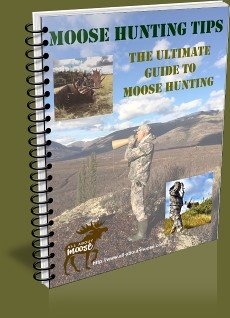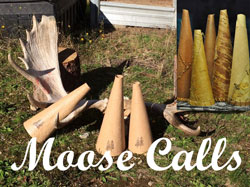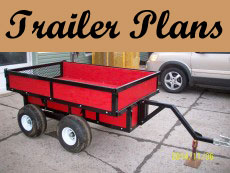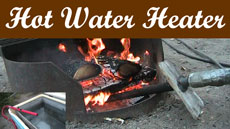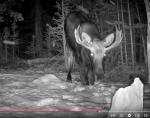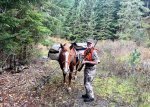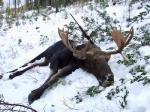.300 Weatherby Magnum (Mark V)
by Brett
(Manitoba)
I bought this rifle while living in the Sub-arctic for long range caribou hunting...then learned you do not need a long range rifle for caribou! Never the less I have used this rifle for the last 20+ years and have always been pleased with it's performance. Technically I could create loads with a 110 gn bullet all the way up to 220 gn. What I use for all my big game now is the Barnes TTSX copper mono-metal bullet (In my mind not only good for the environment, but the less lead my family eats the better)in 180 gn loaded for a muzzle velocity of 3200 FPS (there are several mono-metal bullets that are comparable.) This load has a point blank range of 400 yards if zeroed for 300 yards. I use this load on deer sized to moose sized game.
Some here suggest that "that cannon will ruin all the meat on a deer!" This is simply not true. When my bullet hits the chest at 300 yards it creates sufficient hydrostatic pressure to drop any deer, yet ruins no meat at all, while a hunter that shoots a deer in the shoulder with a .243 does ruin lots of meat and even more if they need to take a second or third finishing shot. Yet this is all the bullet you need out to 400 yards for moose or 500 yards for deer. And at 400 yards that is still over 2300 ft-lbs, as much as some rifles have at the muzzle! (Disclaimer: I do not recommend anybody shoot out to 500 yards unless they have practiced shooting out to 500 yards...a lot!)
Lets talk accuracy. The above bullet out of my rifle has a 0.5 MOA. With practice using a bipod or tripod this makes hitting the vital area of a moose (typically 18-21 inches)even at 400 yards almost easy. Of course that requires that the shooter does not flinch at the recoil. I am a big lanky guy so I needed a few extra inches of length on the butt of the stock so I added a 3 inch recoil pad. My rifle has no more felt recoil than my Dad's old 30-06. You'll still get a fair amount of muzzle movement, but that shouldn't matter as it is a one shot take down. You can add a muzzle break, which is great on the range, but I don't like them in the field as it will cause very loud (ear hurting) blasts.
The .300 has the flattest ballistics than any other non-wildcat load that should be used on deer to moose sized game. The energy available out to 400 yards is more than enough for moose at 400 yards. And the felt recoil is quite tolerable for a large man or a smaller one with a recoil pad (on the rifle or worn on the shoulder).
The .300 Winchester Magnum is quite close which can be purchased much Cheaper and factory ammunition is more common so this is definitely an option. But if you want one of the most accurate out-of-the-box rifles on the planet in the best calibre for this type of hunting, then the Weatherby is a no-brainer.
I do not mean to dismiss other fine choices, like the 30-06, 7mm magnum and .270 Winchester (all of which I have used and was happy with) And, of course, if you never shoot past 100 yards a 30-30 with factory ammo is probably all you need.
The bottom line is that many rifles are sufficient for moose hunting, but if you want the best....
Comments for .300 Weatherby Magnum (Mark V)
|
||
|
||
|
Click here to add your own comments Join in and write your own page! It's easy to do. How? Simply click here to return to Hunting Rifle. |
Want to learn how to hunt moose? Or are you wanting to increase your moose hunting skills?
Look no further!
Our moose hunting tips book is written with
not just the novice in mind, there are tips in the book that even the
most seasoned moose hunter will find of value.
The book includes 57 chapters, with more than 150 pages of information, jam packed with tips, techniques and discussions - The Ultimate Guide to Moose Hunting!
And don't forget to order one of our Fiberglass Moose Calls. In stock and ready to ship.
